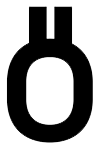I once overheard a conversation where a girl told a boy, “I understand what you say, but I don’t know what you mean.”
Pure poetry.
I know a writer who states that language is not meant for communication.
That same writer:
When people say, “A picture says more than a thousand words,” he replies, “Sure, if you’re a bad writer.”
Words have meaning, but that meaning shifts for each person. Our own experiences and feelings color how we hear and understand them.
In addition to the meaning of words, we also rely on their order. Words need to be arranged in a specific way to make sense of them. This structure, called syntax, is essential for understanding. Without it, the meaning gets lost, and so does communication.
[
Syntax no, if there is understand we don’t.
]
Beyond syntax, we need context. In linguistics, this is where pragmatics comes in. Syntax can be correct, but the words don’t make sense together.
[
Even though the cake was eaten by the sun, I still can’t believe the chair played chess with the moon.
]
Does the same apply to typography?
Yes, typography also relies on context and structure. Just as words need to be in the right order to mean something, typography needs to be thoughtfully arranged. Without the right context and structure, the message becomes unclear.
However, typographers aren’t typically writers__we “just” make text visible.
The usual process goes like this: the writer writes the text and then hands it over to the typographer. This method feels too rigid, as it separates the content from its presentation.
I imagine a different approach, one where typography and writing come together. Where the typographer does more than just visualize the words. And the writer does more than choose the words. Maybe this calls for a new profession? A new name for typography itself?
